In just a few years, solid state drives (SSDs) have nearly replaced magnetic hard drives (HDDs) as the default storage option in laptop computers. However, a new Solid State Hybrid Drive (SSHD) has emerged, offering the best of both SSD and HDD.
So which is the best? The only way to find out is to do a direct comparison, as shown here.
SSD is flash storage similar to USB drive, but it is much faster because it uses NAND memory. On the other hand, SSHD contains both a normal hard disk and NAND memory which serves as a large cache buffer (usually 8 GB). Unlike a hard drive, the SSD and HDD components of the SSHD are combined into a single piece of hardware.
Both disk drives come in 2.5-inch and 3.5-inch size variations, though the SSD also comes in the M2 form factor, which is much smaller.
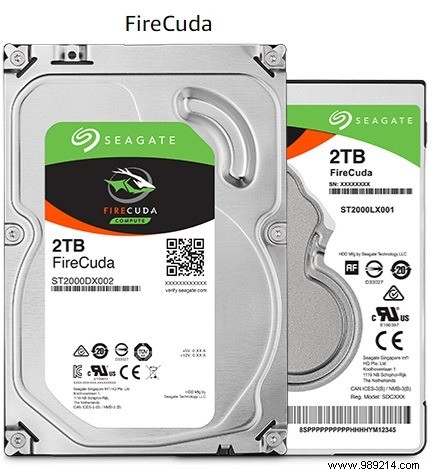
The effective read and write speed for SSDs can be found at this link. The speeds can then be compared to any SSHD at that link. Another way to gauge the current speed of your hard drive is to download this tool by PassMark software.
In the following test, we compared a 240GB Seagate SSD device released in 2013 with a 2016 release Seagate Firecuda 2TB SSHD. Our test SSD device is ranked 404th out of 1026 SSDs, while the SSHD device is ranked 71st out of 1015.

According to the results, even an older, lower-ranked SSD device clocks much higher read speeds (3.2x) and write speeds (2.7x) compared to a newer SSHD device. and high rank. This means that if raw speed is your sole determinant, even an older SSD device is ahead of a newer SSHD device.
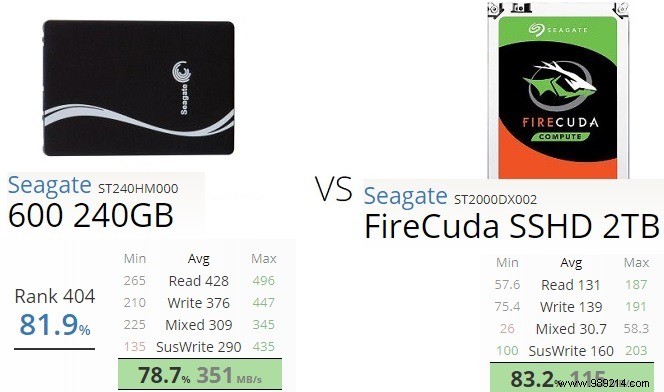
A gaming site, Eurogamer, tested the load times of four heavy games on a common benchmark (e.g. same CPU speed). For this comparison, they used OCZ Trion 100 (a SATA-based SSD), Seagate Firecuda 2 TB SSHD (as above) and a 500 GB HDD.
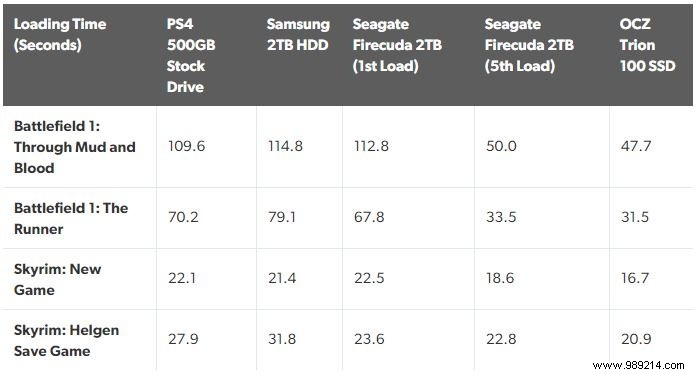
As noted here, in the first load time comparison, the SSD was consistently ahead of the SSHD in all games. With SSHD, the initial load time of applications in these games lags because they are launched from the HDD component.
The SSD component of SSHD is associated with "frequently accessed data" and "boot data". As an illustration of the first, through the fifth test load, all games downloaded around the same time as the SSD device.
To illustrate the boot data comparison, we'll check the test results Seagate performed for their own HDD, SSHD, and SSD products running on an Intel Core i5 processor and Windows 7. They used a 7200 RPM hard drive. , a Seagate Desktop SSHD and an Intel 320 SSD. The boot times (shown in the second vertical bar) are similar here for SSHD and SSD because only the flash component is used.
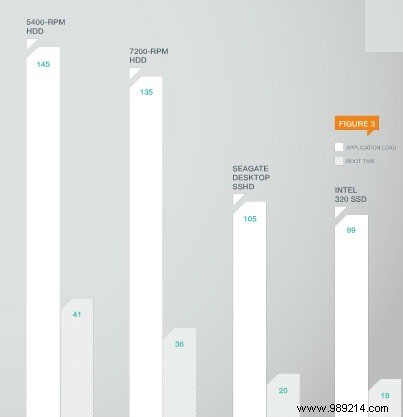
You can easily pick up affordable SSD models in the 500GB range for less than $80. In the 1TB threshold, a SATA-based SSD can be for less than $100. However, high capacity SSDs in the 2TB range are usually much more expensive (>$250), especially the NVMe SSD.
By comparison, a 2TB SSHD such as Seagate FireCuda can be had for about the same price as a 1TB SSD. A 500GB SSHD can be had for less than $60. The price per GB for an SSHD always beats the SSD.
If you have a lot of data, you should consider SSHD over SSD, as this goes with the above benefit of faster load times due to a learning curve.
There is a popular belief that SSD storage wears out over time as the NAND cell degrades with each use (similar to USB drives). This is actually true for earlier designs, but later generation designs have lower failure rates. Commercially available SSDs are much more durable for a realistic life cycle.
For SSDs, an important life expectancy parameter is TBW (terabytes written) which indicates the terabytes of data you can write to the disk over its lifetime. Consider the following Barracuda SSD 500 GB with 320 TBW. Even if a user writes 100 GB of data every day (extremely unlikely in a consumer environment), it will take 8.7 years to reach the life expectancy of this SSD. Indeed, according to the most recent estimates, the age limit for SSDs is around 10 years.
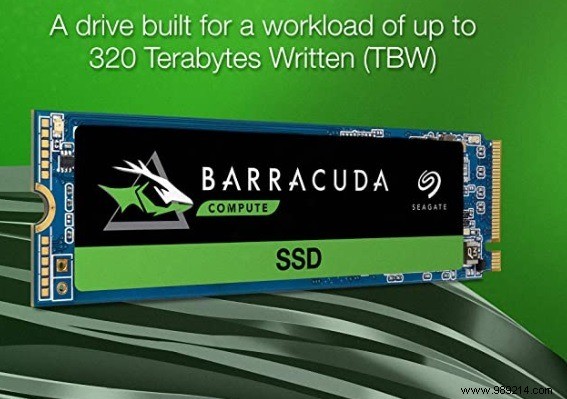
However, with SSHD, you gain in lifespan. For example, this Seagate FireCuda SSHD has a load/unload cycle of 600000 according to its spec sheet.
This refers to a software-controlled power on/off cycle. Even if you rebooted and booted your SSHD system 150 times a day continuously (extremely unlikely in a consumer environment), the SSHD should last 10.9 years, which is higher than the SSD. In reality, SSHD lasts even after its load/unload cycle has passed. Its failure rate due to program cycles is much lower because it uses both SSD and HDD parts more efficiently than if they were separated.
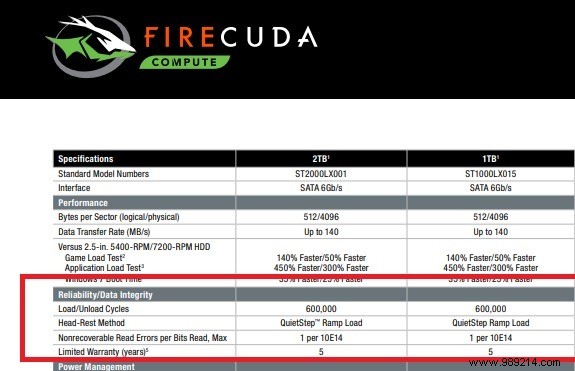
Currently, SSDs and SSHDs have very high lifetime values. So you don't have to worry about hard drive failure even with heavy use of either. However, SSHD is still ahead.
If you are looking for pure speed, SSD is definitely better for you.
If your budget is limited or you need more storage space with an equally fast boot speed and quick access to frequently used apps, then an SSHD is the one for you.
If storage space is all you need, you can also use an SSD and HDD combo (as a secondary drive). SSD is for system files and applications while HDD is for storing backups like your photos, media files, etc.
ContentsDifferences between SSD and SSHD1. Benchmark speed comparison 2. Loading time comparison 3. Price and capacity comparison 4. Life Expectancy:SSD vs SSHD Final Verdict:Which Type of Storage is Best?